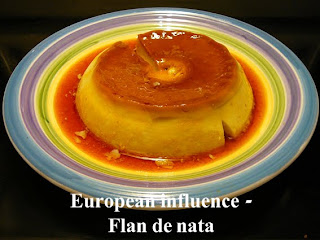Amerindian Influences: Brazil’s indigenous population, long before the arrival of Europeans in the middle of the last millennium, gathered, hunted and cultivated a wide variety of foods, drinks and condiments, including maize (corn), manioc, fresh and saltwater fish and honey. Fruits were commonly used in the preparation of food and drinks, such as papaya (Pt: mamão) and the fruit of the cashew tree (Pt: caju), which was the base for a hallucinogenic drink known as Cauim). One of the major Amerindian contributions to contemporary Brazilian cuisine is manioc flour (Pt: farinha de mandioca), one of the most-consumed food products in Brazil, and used in the preparation of farofa, pirão and tapioca.
African Influences: When African slaves were brought to Brazil on board slave-traders sailing vessels, they brought with them a vast culinary knowledge, as well as well-loved ingredients. Among the products in Brazilian cooking that highlight the African contribution is Dendê Oil (Pt. Azeite de Dendê), the highly-colored and –flavored oil of a variety of Palm tree. Dendê is indispensible in many of the most traditional Brazilian dishes, either as in ingredient, or as a cooking medium. The dish which is often called Brazil’s national dish, feijoada, is the result of African adaptation to the harsh conditions of slavery, combining African culinary tradition with the meat scraps and offal that were the slaves’ share of butchered animals. African influence can also be seen in the Brazilians’ love for seafood and fish.
European Influences: Europeans, primarily but not exclusively the Portuguese, contributed a variety of foods to Brazilian cuisine, principally by being the farmers and ranchers who cultivated the ingredients that go into the creation of Brazilians’ daily food. European influence is responsible for the emphasis on meat in Brazilian cuisine, including meat products like beef, pork, lamb, dried meats (Pt. carne do sol), and animal sub-products like milk, cheese, eggs. Typical Brazilian baking (including sweet goods) is based on European culture, and liquors and drinks such as beer show European influence.
This blog is intended to showcase the delights of Brazilian cuisine and foods. It won’t be academic, but I hope it will be informative and interesting. Stories, photos and recipes will all contribute to provide a necessarily incomplete, and unabashedly personal, view of the delights to be found in the food and drink of this marvellous country. Enjoy!




Brazilian food is delicious. I've been checking those pictures and it feels like biting the screen!:) http://migre.me/t0bM
ReplyDeleteyep! yummy stuff! luvit!
ReplyDeleteBạn muốn sử dụng dịch vụ giao hàng thu tiền hộ. Bạn là chủ kinh doanh cần nơi nhận giao hàng cho shop online. Bạn muốn biết bảng giá giao hàng nhanh để chuyển hàng đi đà nẵng hoặc là giá chuyển hàng đi hà nội. Hãy liên hệ chúng tôi, đảm bảo bạn sẽ hài lòng khi sử dụng dịch vụ của chúng tôi.
ReplyDeleteKênh thông tin mua bán nhà đất tại Việt Nam , nếu bạn muốn mua hay bán nhà đất thì chỉ cần vào đây , chúng tôi sẽ cho mọi người biết về tin của bạn, nhà đất tphcm, nhà đất gò vấp, nhà đất thủ đức, nhà đất tân phú, nhà đất quận 9 . Còn chần chờ gì nữa , hãy đăng tin mua bán nhà đất nhanh nhanh . Bạn đang phân vân không biết phải chúc đám cưới bạn mình như thế nào thì bạn có thể tham khảo lời chúc đám cưới, in thiep cuoi, lời chúc đám cưới hay o day .
ReplyDeletehttp://bacsitructuyen.edu.vn/
ReplyDeletehttp://catmimat.edu.vn/
http://apxequanhhaumon.com/
http://baoquydaubisung.com/